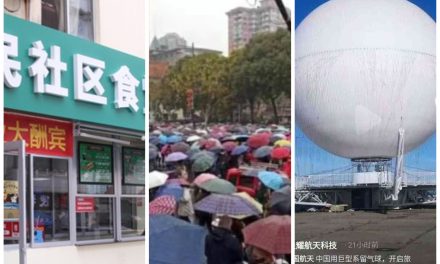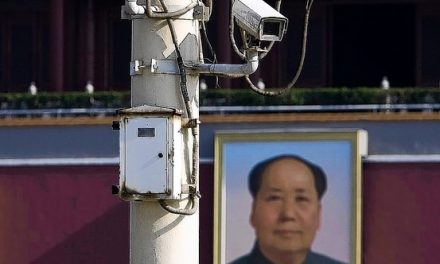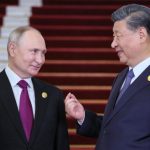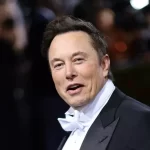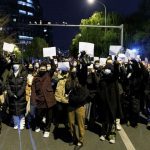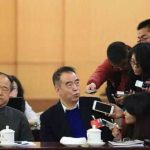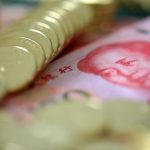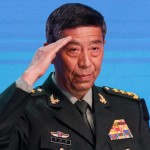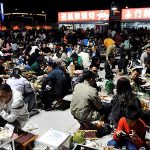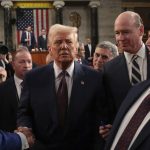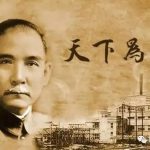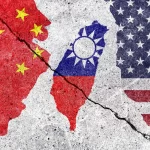by Bradley A. Thayer Lianchao Han
This month Communist China is holding its annual “two sessions,” during which the members of two main political bodies of the Chinese Communist Party (CCP) gather in Beijing to rubber-stamp the new policies and goals set forth by the party. This year’s agenda is particularly important because the CCP will formalize its next moves to achieve its “second centennial goal,” in essence, what it hopes to achieve in the years to come.
Prior to the “two sessions,” the CCP’s party chief Xi Jinping announced that China has attained the “first centennial goal,” which was “complete building a moderately prosperous society,” and officially ending poverty in the country. Xi boasted: “We have finished the arduous task of eradicating absolute poverty and created a miracle that shall go down in history,” despite the fact that China has six hundred million people living on a monthly income of one thousand yuan (U.S. $140) according to China’s Premier Li Keqiang. Not surprisingly, the CCP’s mouthpieces hailed Xi as a hero, responsible for “realizing the Chinese dream of the great rejuvenation of the Chinese nation.”
The CCP’s first centennial goal is tied closely with this year’s celebration of the centennial anniversary of its 1921 founding. The announcement is designed, first, to provide the CCP’s with the self-justification to rule and oppress the Chinese people, what the CCP terms “socialism with Chinese characteristics. Second, to tout the greatness of the leader and the ruling party at a time when China’s economy purportedly is rapidly bouncing back from pandemic, while the rest of the world continues to struggle. These measures serve to legitimize and justify Xi’s dictatorial rule.
Xi is now showcasing an even more ambitious plan, which was decided last October during the fifth plenary session of the 19th CPC Central Committee, to make China a “great modern socialist country” by the mid-twenty-first century. This new plan is divided into two stages. The first stage, from 2020 to 2035, basically is to achieve socialist modernization; and from 2035 to 2049—the centennial of the founding of the People’s Republic of China—to turn China into a “great modern socialist country.”
In the first stage, “China’s economic and technological strength, and composite national strength will increase significantly. A new stride will be made in the growth of the economy and the per capita income of urban and rural residents. Making major breakthroughs in core technologies in key areas, China will become a global leader in innovation.” In the second stage, China will be a great modern socialist country, that is “prosperous, strong, democratic, culturally advanced, harmonious and beautiful.”
Hiding behind the unique verbiage of the CCP are the true strategic objectives: to maximize China’s global power and influence, surpass the U.S. economy within fifteen years, not only reduce its reliance on foreign technologies but beat the West in technological development and implementation, and then surpass the United States in all areas, particularly in military strength, to achieve world dominance.
Although the CCP’s previous leaders set the two centennial strategic goals in motion, Xi has expedited the process and timetable with an unprecedented urgency. Xi argues explicitly that “the United States is the biggest threat to our country’s development and security.” He also believes “the grand trend is that the East is rising while the West is declining,” which is demonstrated by “the orderly rule of China and the chaos of the West.” Thus, for Xi, the CCP has a strategic opportunity that it must now seize.
Despite CCP’s rhetoric regarding the economic development of the Chinese people, the real goal is regime security. Continued economic growth will boost its legitimacy and allow it to hold on to power while offering the world a new governance model. CCP officials now commonly follow Xi’s lead in naming the United States as the regime’s arch-enemy, attacking the United States for purportedly blocking China from becoming a great world power, and realizing its dream.
To ensure the success of China’s 2035 plan, the CCP amended its defense law which became effective in 2021 in order to launch a national mobilization if its “development interests” are threatened. Importantly, the law fails to define “development interests.” A consequence of this law is that the CCP will launch wars or other military actions against any country perceived to be standing in its way of world dominance.
Under the pretext of strengthening regime security, Xi has also imposed new measures to tighten the CCP’s political control over Hong Kong. For the first time, the traditional description of “one-country-two-systems” is no longer mentioned in the “two sessions.” The commitment made by the CCP of letting Hong Kong people govern Hong Kong has changed to “patriots,” that is, Communist party loyalists, to run Hong Kong. To achieve this, China is about to abolish the Hong Kong electoral system. Anyone who criticizes the CCP and advocates for universal suffrage will be disqualified to run for Hong Kong’s legislature, eliminating any space for Hong Kong’s democracy. As Global Times, one of the CCP’s official media, reports, “the [CCP] central committee has been resolute about fundamentally changing the ‘rule of the game’ in Hong Kong’s politics.” This means China has officially decided to end Hong Kong’s “one country, two systems” and publicly broke the commitment that China’s “socialist system and policies shall not be practiced in Hong Kong” and that “the previous capitalist system and way of life shall remain unchanged for 50 years,” a deception that fooled the world for decades.
Alarmingly, China’s 2035 expansion agenda includes a plan to annex Taiwan under the guise of greater cooperation. Beijing intends to build a high-speed railway and expressway linking Beijing and Taipei under the National Comprehensive Transportation Network Plan released during the “two sessions.” China has constructed the world’s longest bridge connecting Hong Kong and Macau to the mainland Chinese city of Zhuhai, which cost $20 billion. The CCP uses this physical connection to insert its territorial claims and determination to change Taiwan’s status quo.
From this view, the CCP’s 2035 plan is a de facto declaration of intent to gain world dominance. The United States should expect the regime’s fierce competition and aggression in all areas, but particularly in high-tech as China attempting to obtain key technologies—or “chokehold technologies” that it does not yet possess or dominate. The United States cannot take China’s ambitions and its threats lightly. Seldom do states receive warning of aggressive intent, but the United States just did.
This article first appeared in National Interest on March 14, 2021


